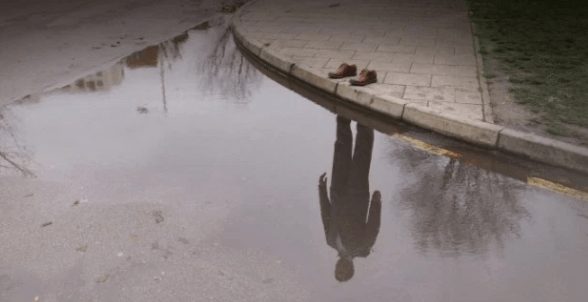The word Dickensian conjures up all sorts of antiquated notions about sentimentality and nostalgia – this modern adaptation directed by Jonathan Holloway dispenses with any suggestion of the trite and the twee right from the get-go. Even before the play begins, the stage is crowded with a plethora of empty chairs and feetless pairs of shoes, imbuing an atmospheric sense of loss before even a single line is recited.
Condensing a novel of A Tale of Two Cities’ size and complexity into a 90-minute play is a tall order for anyone, and the production team do themselves no favours in the opening scene by referencing Edinburgh (apparently in an attempt at relatability), only for the remark to be dropped and never commented upon again. Once this initial confusion is cleared up, the play remains faithful to its source material, while still contributing enough of its own flashes of originality to keep the viewer rapt throughout.
The numerous chairs might seem like overkill at the outset, but their significance soon becomes clear and the full gamut of the stage is used to create powerful impacts on several occasions. Meanwhile, the audacious decision to include the technical area inside the set itself is ingenious and doesn’t really hamper the flow of the piece at all. Lighting, props and sound effects are all used commendably, although the melodic interludes don’t really add anything and indeed begin to resemble the work of a barbershop sextet, which detracts from the gravitas of an otherwise accomplished and solemn piece of theatre.
However, such minor complaints are saved by the impeccable acting from the cast. The technician playing old Dr Manette is the obvious weak link, but since the character is losing his mind, any woodenness can be explained away – plus, the man clearly has his hands full man with his primary job. Elsewhere, the cast are virtually flawless and their seamless shifting between roles is assisted via the use of costume changes and the adoption of various accents. The onstage chemistry is excellent and the adaptation highlights the various plights of each character effectively, with Madame LeFarge’s enduring grief given particularly memorable treatment.
For an innovative and refreshing take on an age-old classic which neatly sidesteps clichéd or hackneyed techniques, Holloway’s production is not to be missed. Bear with it past the unnecessary obfuscation in the opening scene and you’ll be well-rewarded for the investment of your time.
